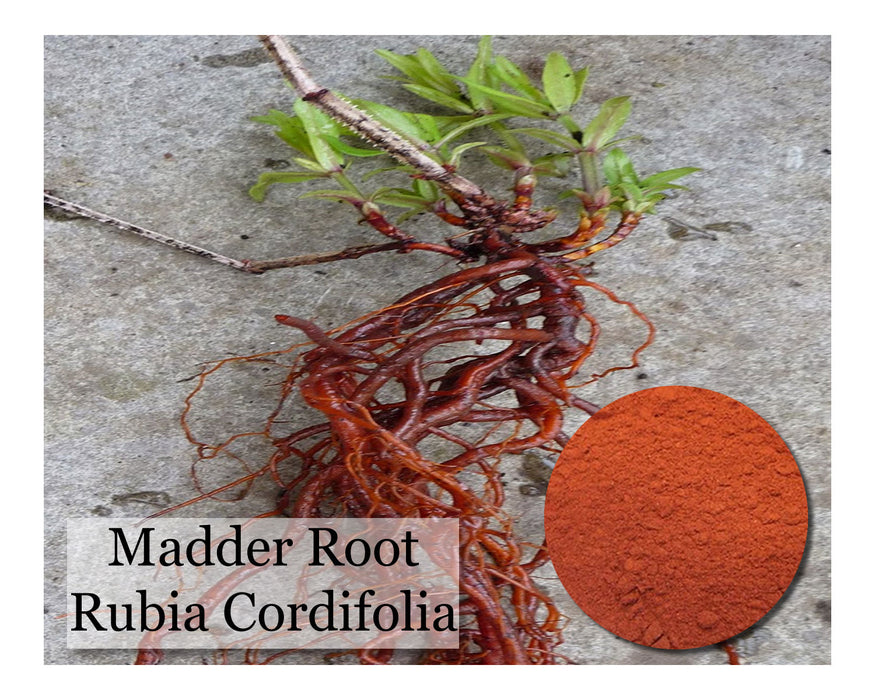
Madder - Rubia Cordifolia - Powder - 2 oz
Madder – Rubia tinctorium, Rubia cordifolia, and Morinda citrifolia is an ancient dye that dates back to 3000BC. It is most frequently used to produce turkey reds, mulberry, orange-red, terracotta, and in combination with other dyes and dyeing procedures can yield crimson, purple, rust, browns, and near black. The primary dye component is alizarin, which is found in the roots of several plants and trees. Madder is cultivated and grows wild throughout India, south east Asia, Turkey, Europe, south China, parts of Africa, Australia and Japan. Madder is a complex dyestuff containing over 20 individual chemical substances. Alizarin is the most important of these because it gives the famous warm Turkey red color. Also present in this wonderful plant is munjistin, purpurin, and a multitude of yellows and browns. Madder is dyed at 35-100% WOF for a medium depth of shade.
- Dye Amount: 35-100% WOF
- Color: Cranberry to Garnett
- Light fastness: High
- Wash fastness: High
- Mordant
- Alum mordant at 15% WOF for protein fibers
- Tannin mordant at 8% WOF and then alum at 15% WOF, or alum acetate at 8% WOF for cellulose fibers.
-
Dyeing: Madder develops to its deepest and richest reds in hard water – water containing calcium and magnesium salts is ideal. If the water is soft add calcium carbonate (a single Tum’s tablet to 4 litres of water works well). Add dye material to dye pot and cover with water. Bring up to about 60ºC (140ºF) and hold for an hour. Add fibres and continue cooking for another 1-2 hours. For clear reds do not let the temperature go above 72ºC (160ºF). At higher temperatures the browns of the madder plant come out and dull the colour. The madder dyebath can be reused two or three times for lighter shades
Because of the different dye components present in the madder plant, the dyer can coax many colors out and onto the cloth by manipulating the mordanting process, the pH, the temperature, and the dye process. There are hundreds of madder recipes used historically that are intriguing to try including one from Turkey which brings out the purpurin from madder and gives a purple.
Madder, in combination with cochineal yields a true red, with iron yields garnet, bright orange with alum and cream of tartar, brick red with alum mordant and a higher heat, the addition of acetic acid or vinegar plus iron will push the color to a rich brownish-purple.
